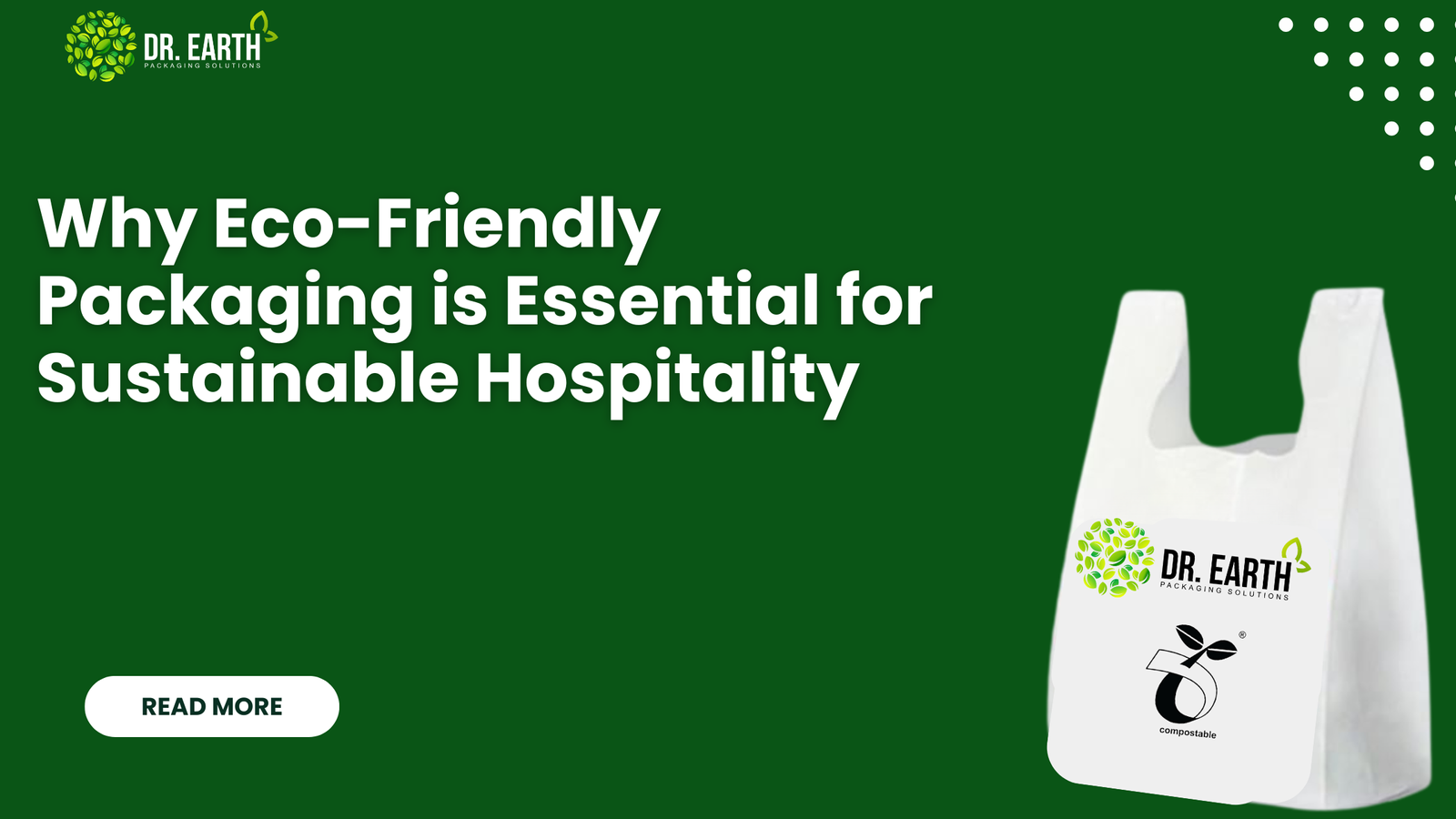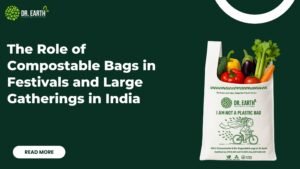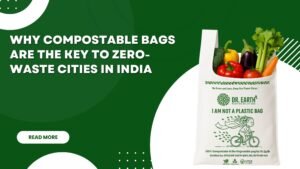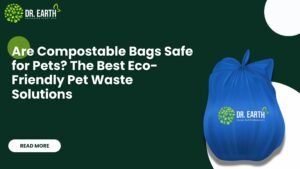
The hospitality industry influences the overall status of the worldwide economy and its consumers. However, it is a significant threat to the environment, especially through plastic bags and non-biodegradable products. As more and more guests become conscious about the effects of their actions on the environment, using environmentally friendly packaging has been more than just a passing fancy; it has become the standard.
As our focus in this blog post, we’re going to look at why sustainable packaging is necessary for the future of the hospitality industry and how it can assist firms in their pursuits to minimize waste and cater to the needs of their clientele across the globe.
The Environmental Impact of Conventional Packaging
1. Contribution to Plastic Pollution
- Around 8 million tons of plastic waste finds its way into the world’s seas annually, and the hospitality industry is a chief contributor.
- The packaging materials that are non-biodegradable take hundreds of years to decompose and hence are destructive to the wildlife and other forms of life on earth.
2. Carbon Footprint
The production and disposal of traditional packaging materials account for a huge carbon emission. This makes climate change worse, which is one of the issues directly affecting tourist-dependent and natural beauty-based industries.
3. Waste Management Challenges
Hotels, restaurants, and catering services, for instance, generate the highest amount of packaging waste material, which usually ends up as landfill or incinerated in facilities, emitting many harmful toxins into the surroundings.
What is eco-friendly packaging?
Eco-friendly packaging is defined as materials that minimize negative impacts on the environment. These are:
- Biodegradable: Break down naturally without leaving any residue.
- Compostable: Decompose into nutrient-rich organic matter.
- Recyclable: Can be repurposed for new products, minimizing waste.
- Reusable: Designed to be used multiple times and reduce the need for single-use packaging.
Examples include cornstarch, bamboo, kraft paper, and PLA (polylactic acid).
The Role of Eco-Friendly Packaging in Sustainable Hospitality
1. Reducing Waste
Hospitality companies generate massive packaging waste every day, starting from food delivery services up to hotel toiletries. Eco-friendly packaging reduces waste as it offers materials that can decompose or be recycled, with minimal negative impact on the environment.
2. Meeting Consumer Expectations
Modern consumers are more environmentally conscious than ever before.
- 73% of the world’s consumers are willing to pay more for sustainable products and services.
- Eco-friendly packaging shows a company’s commitment to the environment and creates loyalty and trust.
3. Enhancing Brand Image
Hospitality brands show their social responsibility through adopting sustainable practices, such as eco-friendly packaging. In this age, where customers look for businesses that reflect their values, it becomes a necessity.
4. Supporting Local Regulations
Governments all over the world are introducing tighter regulations on single-use plastics. The shift to eco-friendly packaging ensures that these businesses stay compliant and avoid fines as well as reputational damage.
5. Promoting a Circular Economy
Eco-friendly packaging is an enabler of the circular economy because it promotes recycling and discourages reliance on finite resources. Hospitality can be one of the greatest enablers of this model.
Applications of Eco-Friendly Packaging in Hospitality
1. Food and Beverage Packaging
- Biodegradable takeaway containers made from cornstarch or bamboo.
- Cornstarch- or bamboo-based biodegradable takeaway boxes.
- Compostable spoons, knives, and straws to supplant plastic ones.
- Reusable cups and water bottles.
2. Room Amenities
- Toiletry dispensers made from recyclable materials and bottles.
- Paper-based amenities packaging of soaps, etc.
3. Event Management
- Eco-friendly conference and event gifting and wrapping.
- Biodegradable wraps and stickers for publicity material.
4. Catering Services
- For large gatherings, compostable trays and plates.
- Recyclable food-storing cling wraps and bags.
Benefits of Eco-Friendly Packaging for the Hospitality Industry
1. Environmental Impact
Sustainable packaging brings down waste and carbon emissions significantly, which in turn helps to combat global environmental issues.
2. Economic Benefits
Although green packaging is more expensive at first, it can save money over the long term through:
- Decreased waste disposal fees
- Customer loyalty
- Regulatory compliance, avoiding fines.
3. Improved Guest Experience
Guests are getting increasingly sensitive to the impacts of their choices. The eco-friendly packaging will depict your business as one aligned with theirs, thereby boosting satisfaction and loyalty.
4. Differentiation in a Competitive Market
Sustainability is increasingly becoming a priority for many. The implementation of eco-friendly packaging can make the business stand out in this already congested hospitality market.
Challenges of Implementing Eco-Friendly Packaging
1. Higher Initial Costs
Eco-friendly materials are usually costlier than the traditional packaging material. The investment will be paid back in terms of improved brand reputation and customer loyalty.
2. Supply Chain Limitations
Sourcing suppliers of eco-friendly packaging materials is hard to find. Companies have to identify companies that share the same sustainability vision.
3. Education and Training
Employees and customers may require education on how to effectively use the eco-friendly packaging for proper reuse and disposal for its most effective use.
Steps to Transition to Eco-Friendly Packaging
1. Conduct an Audit
Review your current practice in relation to packaging and find loopholes where alternative green use can be adopted.
2. Partner with Sustainable Suppliers
Team with trusted suppliers, such as Dr. Earth, in finding qualified, biodegradable, and compostable, high-quality packaging solutions.
3. Educate Staff and Customers
Clearly instruct how to dispose of eco-friendly packaging correctly; this is to maximize its environmental impact.
4. Monitor Progress
Keep an eye on the progress of your switch to sustainable packaging to know where improvements may be needed and what can be celebrated.
Why Choose Dr. Earth for Eco-Friendly Packaging?
Dr. Earth is one of the top companies offering biodegradable and compostable solutions specifically designed for the hospitality industry. Here’s why they are the perfect partner for your sustainability journey:
1. High-Quality Products
The products of Dr. Earth that are cornstarch-based bags, among others, are robust, practical, and are certified to be compostable.
2. Trusted Certifications
Through CPCB, CIPET, among others, Dr. Earth guarantees that the products are produced under the highest environmental performance standards.
3. Wide Range of Solutions
From biodegradable bags to food containers, Dr. Earth provides a comprehensive solution for all types of hospitality.
4. Affordable Pricing
Dr. Earth brings sustainability at affordable costs so that all businesses, big or small, can implement green practices.
5. Commitment to Education
Dr. Earth educates its partners and customers about the sustainability practice and fosters a commitment to protecting the earth.
Conclusion
Going forward, the trend of going green in packaging is not an option but a choice for hospitality businesses that strive to be relevant and responsible in today’s world. With sustainable practices, the environment is saved, and other benefits include attracting environmentally sensitive consumers, brand image enhancements, and compliance with increasing regulations.
With trusted partners like Dr. Earth, it is easy to switch to eco-friendly packaging, making the process both smooth and impactful. Join the movement toward a greener future today and make sustainability the hallmark of your hospitality business.
FAQs
Q- 1. What materials are commonly used in eco-friendly packaging?
Ans- Commonly used materials for eco-friendly packaging include cornstarch, bamboo, kraft paper, and PLA.
Q- 2. Can eco-friendly packaging be used for all hospitality needs?
Ans- Yes, there is an eco-friendly alternative for food packaging, room amenities, event supplies, and much more.
Q- 3. How can I ensure proper disposal of eco-friendly packaging?
Ans- Educate guests and staff about composting and recycling practices, and provide labeled bins for waste segregation.
Q- 4. Is eco-friendly packaging more expensive?
Ans- Although the initial cost is a little higher, the long-term benefits, such as the reduction in waste fees and an increase in customer loyalty, make the investment worthwhile.
Q- 5. Where can I find reliable eco-friendly packaging suppliers?
Ans- Dr. Earth provides a comprehensive selection of third-party-certified eco-friendly products specifically developed for the hospitality industry.
Share:
Related Posts














